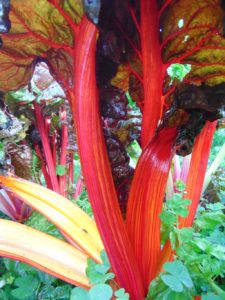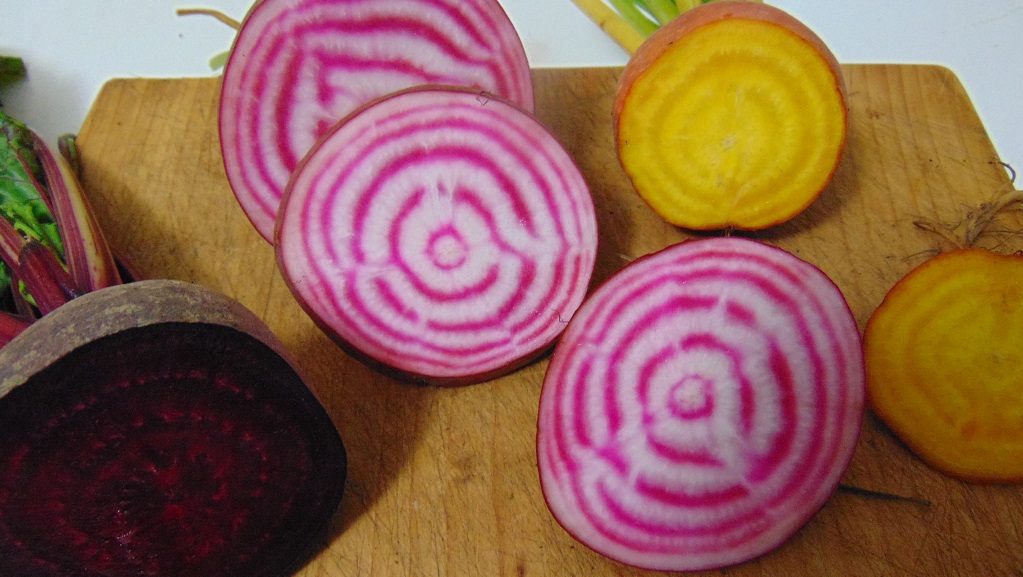Early summer is the turn for the Chenopods or Amaranthaceae. Exotic sounding and indeed they can be exotic. The plant family of chenopods includes plants such as quinoa from the Andes and orache with its deep red leaves. It also includes more familiar foods such as beetroot, spinach and chard.
Beetroot originates from the wild plant sea beet (also edible and delicious) and is a relative ancient vegetable for Britain, having been around at least since the middle ages. Its flavour is deeply earthy and sweet, it does contain a relatively high amount of sugar making it a versatile veg. Alongside the sugar content it is high in fibre and vitamins and minerals. It supports liver function and aids digestion all the time being fabulously pink!
Well not always. We are growing some stunning varieties of beetroot chosen for their aesthetics as well as nutrition al value. The Italian named Chioggia beetroot must be one of the most ornamental of all vegetables. The pink rings are thought to be created each time the moon completes a cycle during the beetroots growth! Put this next to our Golden Globe and Detroit varieties of beetroot and you have a technicoloured feast! See the beetroot burger recipe for another idea for what to do with your beets.
Although you can eat the leaves from beetroot, the beetroot’s relatives chard and spinach have been bred to have no bitterness and be more tender. If you pop in to the farm you’ll almost always see these crops growing. And because we love beautiful veg we grow a gorgeous range of pink, red, yellow and orange chard. Picked well, these 

When it comes to spinach we can’t get enough, given the chance Amelia would use it in every dish. Her cravings for spinach led us to discover that it goes very well with a full breakfast. Having fried up mushrooms with butter and garlic the chopped spinach wilted on top, stirred in just briefly, it made a very nice and healthy addition to the otherwise quite naughty Sunday treat! You not only get iron from spinach but other essential vitamins including vitamins A, C and K which is used by the body to prevent heart disease and retain strength in bones. It’s also full of antioxidants and helps control blood sugar levels, a truly great veg!
If you want to store some of your spinach pack it quite tightly into a plastic bag and put it in the freezer. You’ll find you can crush it to little pieces once frozen if you want (saves chopping latter!) or defrost it as whole leaves to use when spinach is less plentiful. You may have guessed that at the Real Food Garden we have a few of these bags stashed away for ‘emergencies’!

